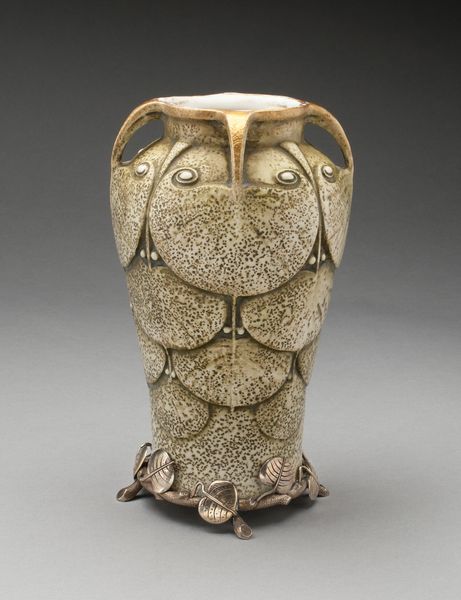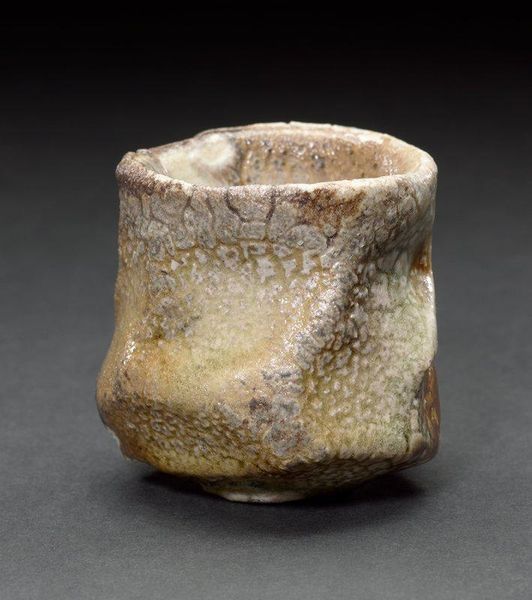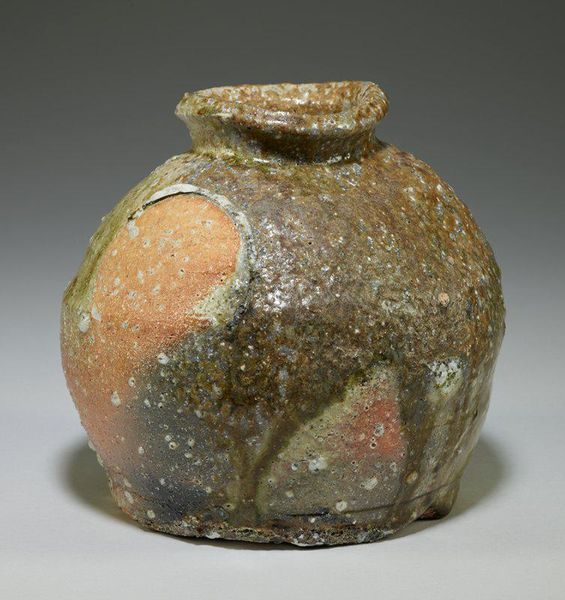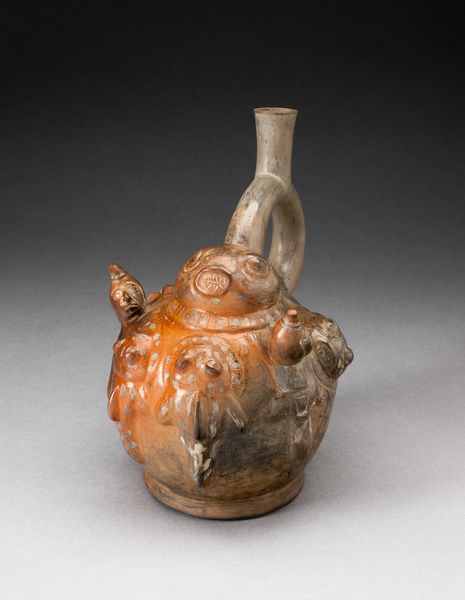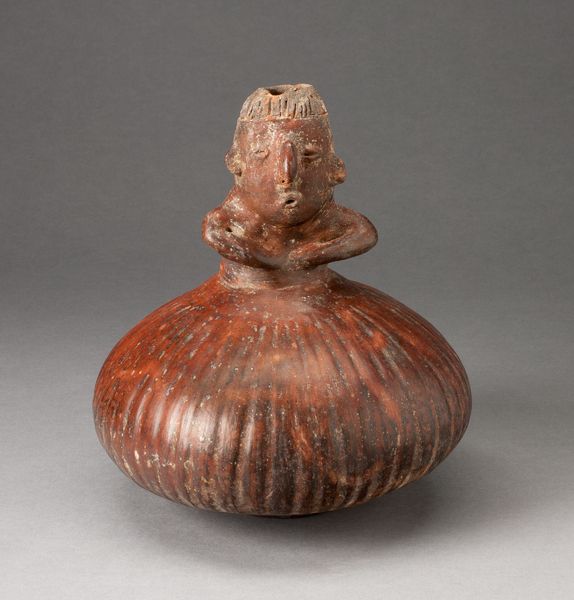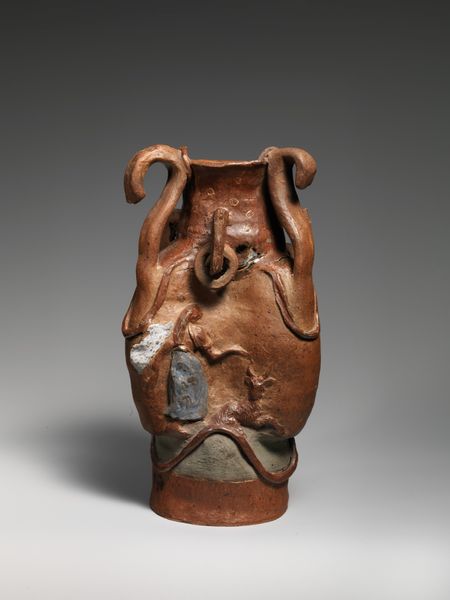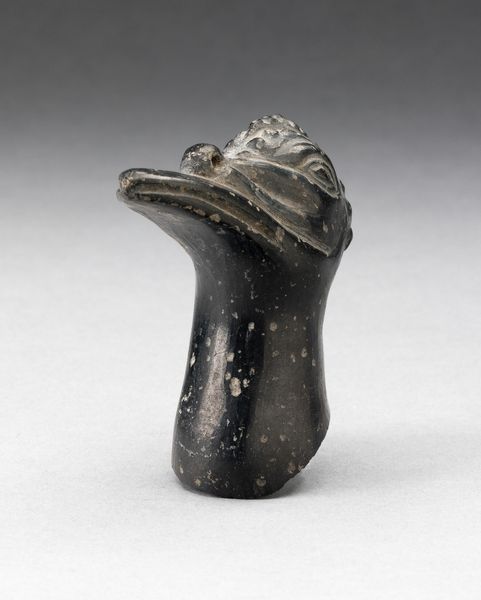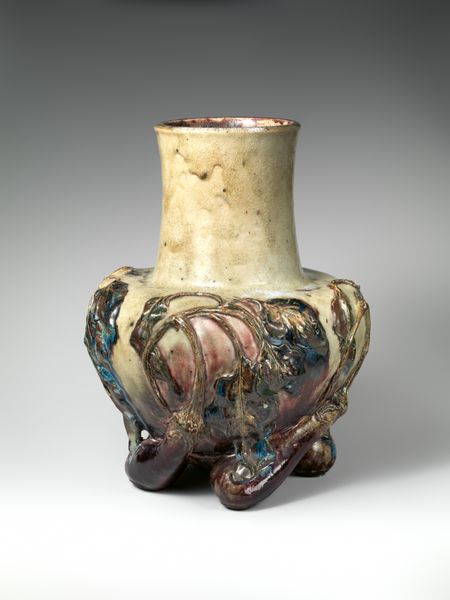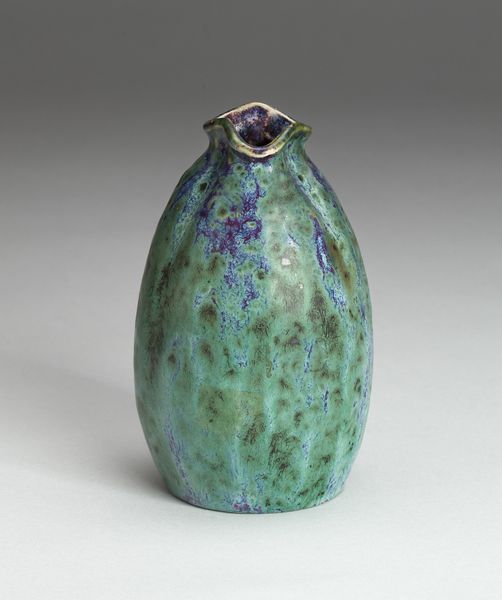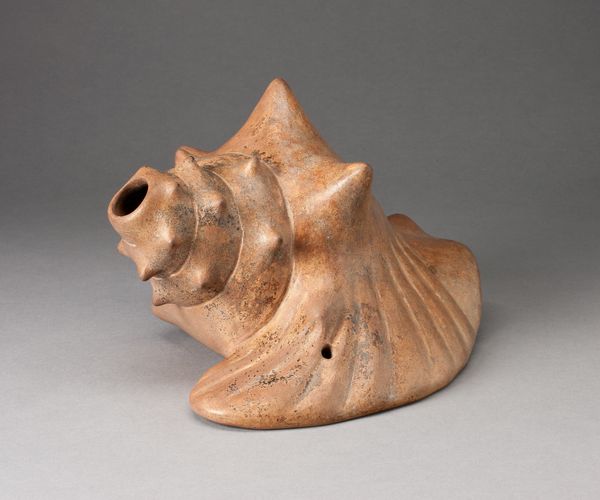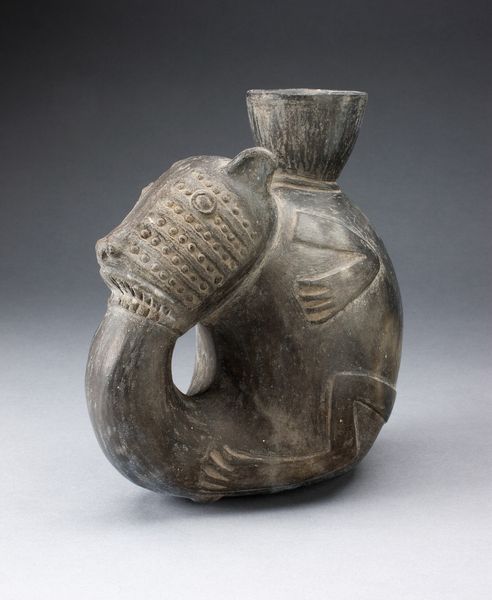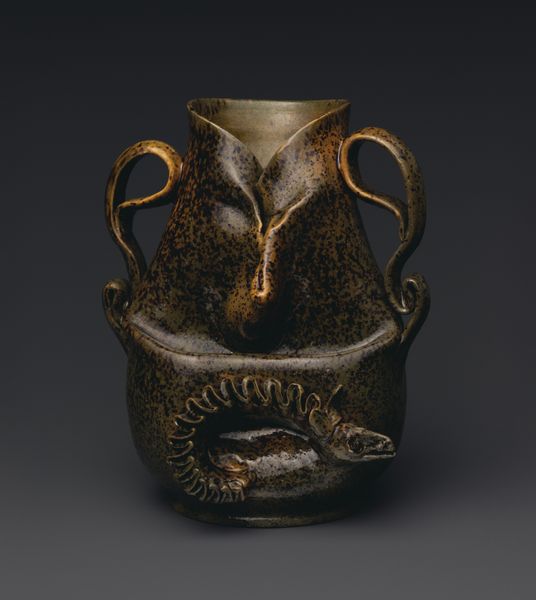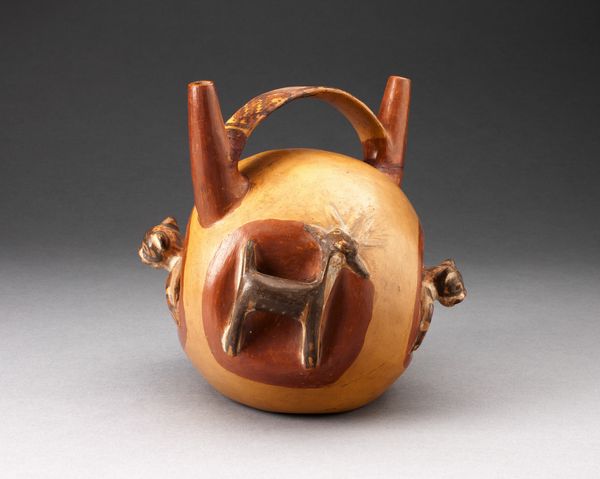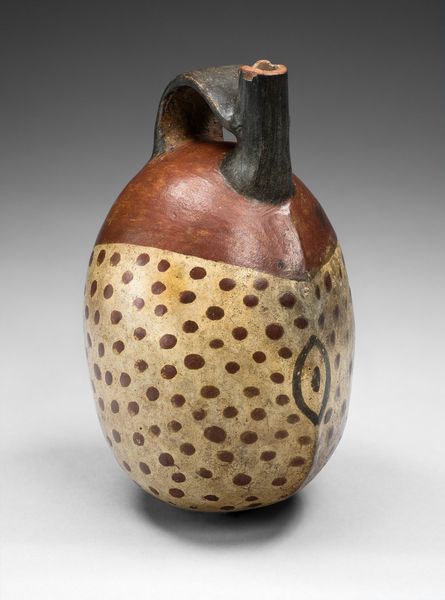
ceramic, sculpture
#
art-nouveau
#
ceramic
#
vase
#
sculpture
#
ceramic
Dimensions: 6 3/16 x 6 1/4 x 5 in. (15.72 x 15.88 x 12.7 cm)
Copyright: No Copyright - United States
Curator: I’m immediately struck by the unsettling beauty of this ceramic piece. It evokes a sense of organic decay. What's your read on this, Editor? Editor: Well, looking at the material and its construction, this is "Vase," created around 1910 by George E. Ohr. He was an American ceramic artist, known for his innovative and eccentric pottery. He challenged traditional methods through the very process of creating art. Curator: Ohr’s non-conformity definitely speaks to me. It reminds me of late 19th and early 20th century anxieties around industrialization and urbanization. I also see the gendered aspect to craft versus fine art at that time and, of course, how Ohr destabilized it. Editor: Yes, you see it so sharply in the pinched sides, and that ruffled lip seems almost impossibly thin. He seemed to manipulate the clay until it was practically at its breaking point. This highlights how Ohr manipulated not just material but conventional values about ceramic as a 'lesser' art form. Curator: Absolutely. And those small, almost grotesque handles—they disrupt any notion of simple functionality. What’s really interesting is how he seems to resist easy categorization of “Art Nouveau” that often confined female labor into pretty decorative crafts. Editor: Ohr wasn't necessarily interested in making a 'pretty' thing. Look at that speckled glaze in browns and greens—it mimics nature without necessarily representing it realistically. The finish disguises the intense work it must have taken to coax that clay. Curator: It suggests this deeper consideration of our troubled relationship to the natural world and artifice during a period of extreme environmental change, when the concept of a stable gender identity was questioned and refashioned in Europe. Editor: Precisely. He uses industrial processes and embraces imperfection—in the splatter, the warps. I think he's showing that, through craft, it’s also possible to challenge the dominant forms and ideas that define those processes. Curator: Yes. It invites us to critically examine our relationship to the past and the role of craft in resisting dominant cultural narratives. I leave now contemplating Ohr’s unique method of creation. Editor: And I depart knowing that this unassuming vase serves as a testament to the capacity of artistic craftsmanship to deconstruct conventional thought by using innovative techniques of ceramic construction.
Comments
No comments
Be the first to comment and join the conversation on the ultimate creative platform.
